Sahar Asadi
Expressivity of Representation Learning on Continuous-Time Dynamic Graphs: An Information-Flow Centric Review
Dec 05, 2024Abstract:Graphs are ubiquitous in real-world applications, ranging from social networks to biological systems, and have inspired the development of Graph Neural Networks (GNNs) for learning expressive representations. While most research has centered on static graphs, many real-world scenarios involve dynamic, temporally evolving graphs, motivating the need for Continuous-Time Dynamic Graph (CTDG) models. This paper provides a comprehensive review of Graph Representation Learning (GRL) on CTDGs with a focus on Self-Supervised Representation Learning (SSRL). We introduce a novel theoretical framework that analyzes the expressivity of CTDG models through an Information-Flow (IF) lens, quantifying their ability to propagate and encode temporal and structural information. Leveraging this framework, we categorize existing CTDG methods based on their suitability for different graph types and application scenarios. Within the same scope, we examine the design of SSRL methods tailored to CTDGs, such as predictive and contrastive approaches, highlighting their potential to mitigate the reliance on labeled data. Empirical evaluations on synthetic and real-world datasets validate our theoretical insights, demonstrating the strengths and limitations of various methods across long-range, bi-partite and community-based graphs. This work offers both a theoretical foundation and practical guidance for selecting and developing CTDG models, advancing the understanding of GRL in dynamic settings.
Understanding Players as if They Are Talking to the Game in a Customized Language: A Pilot Study
Oct 24, 2024

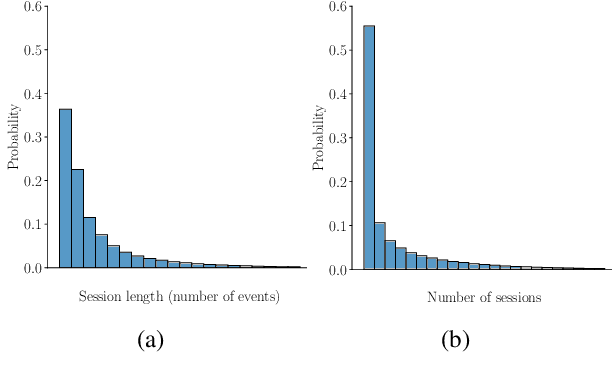

Abstract:This pilot study explores the application of language models (LMs) to model game event sequences, treating them as a customized natural language. We investigate a popular mobile game, transforming raw event data into textual sequences and pretraining a Longformer model on this data. Our approach captures the rich and nuanced interactions within game sessions, effectively identifying meaningful player segments. The results demonstrate the potential of self-supervised LMs in enhancing game design and personalization without relying on ground-truth labels.
player2vec: A Language Modeling Approach to Understand Player Behavior in Games
Apr 08, 2024Abstract:Methods for learning latent user representations from historical behavior logs have gained traction for recommendation tasks in e-commerce, content streaming, and other settings. However, this area still remains relatively underexplored in video and mobile gaming contexts. In this work, we present a novel method for overcoming this limitation by extending a long-range Transformer model from the natural language processing domain to player behavior data. We discuss specifics of behavior tracking in games and propose preprocessing and tokenization approaches by viewing in-game events in an analogous way to words in sentences, thus enabling learning player representations in a self-supervised manner in the absence of ground-truth annotations. We experimentally demonstrate the efficacy of the proposed approach in fitting the distribution of behavior events by evaluating intrinsic language modeling metrics. Furthermore, we qualitatively analyze the emerging structure of the learned embedding space and show its value for generating insights into behavior patterns to inform downstream applications.
Capturing Local and Global Patterns in Procedural Content Generation via Machine Learning
May 26, 2020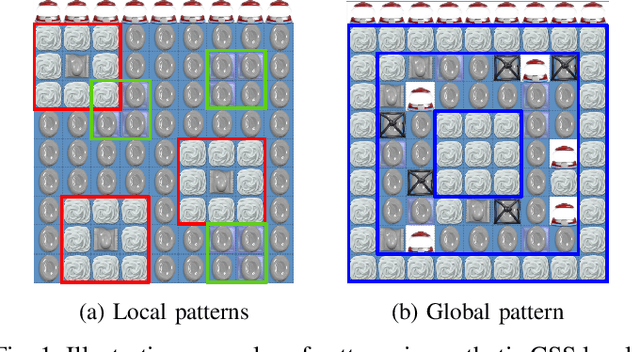
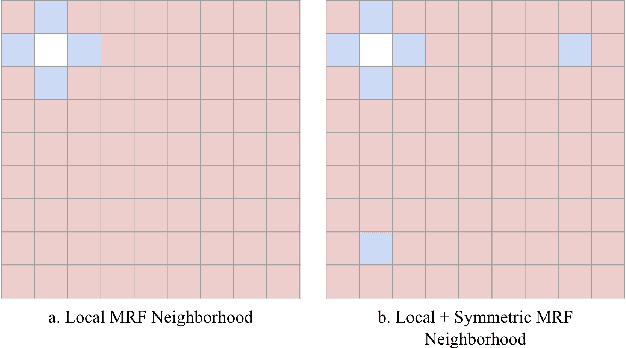
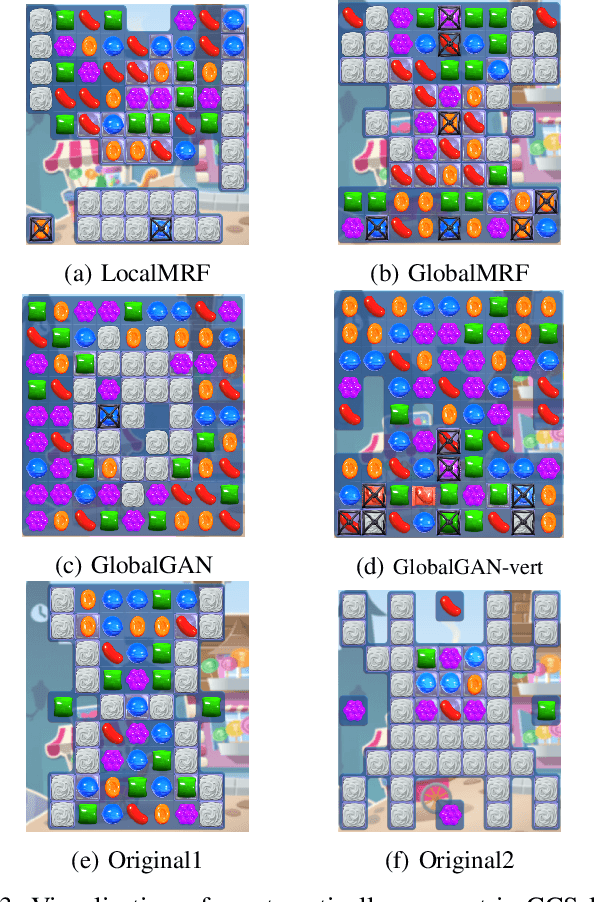
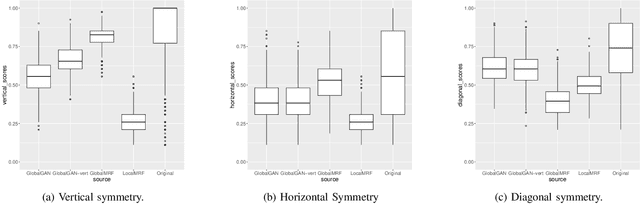
Abstract:Recent procedural content generation via machine learning (PCGML) methods allow learning from existing content to produce similar content automatically. While these approaches are able to generate content for different games (e.g. Super Mario Bros., DOOM, Zelda, and Kid Icarus), it is an open questions how well these approaches can capture large-scale visual patterns such as symmetry. In this paper, we propose match-three games as a domain to test PCGML algorithms regarding their ability to generate suitable patterns. We demonstrate that popular algorithm such as Generative Adversarial Networks struggle in this domain and propose adaptations to improve their performance. In particular we augment the neighborhood of a Markov Random Fields approach to not only take local but also symmetric positional information into account. We conduct several empirical tests including a user study that show the improvements achieved by the proposed modifications, and obtain promising results.
Simple, Scalable, and Stable Variational Deep Clustering
May 21, 2020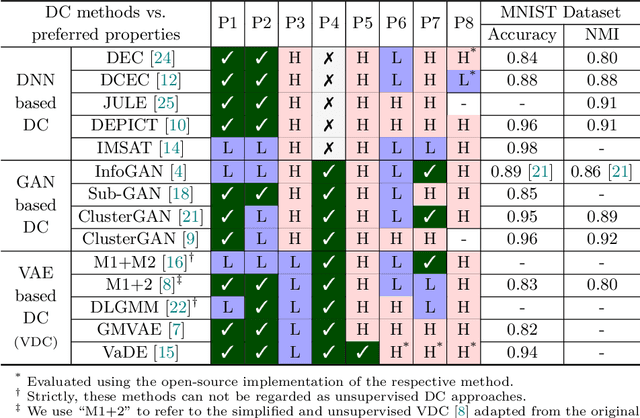

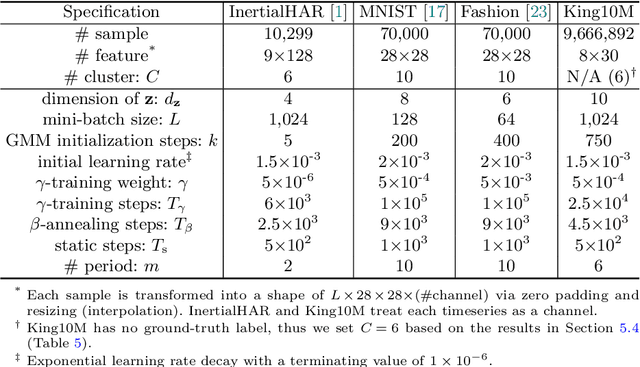

Abstract:Deep clustering (DC) has become the state-of-the-art for unsupervised clustering. In principle, DC represents a variety of unsupervised methods that jointly learn the underlying clusters and the latent representation directly from unstructured datasets. However, DC methods are generally poorly applied due to high operational costs, low scalability, and unstable results. In this paper, we first evaluate several popular DC variants in the context of industrial applicability using eight empirical criteria. We then choose to focus on variational deep clustering (VDC) methods, since they mostly meet those criteria except for simplicity, scalability, and stability. To address these three unmet criteria, we introduce four generic algorithmic improvements: initial $\gamma$-training, periodic $\beta$-annealing, mini-batch GMM (Gaussian mixture model) initialization, and inverse min-max transform. We also propose a novel clustering algorithm S3VDC (simple, scalable, and stable VDC) that incorporates all those improvements. Our experiments show that S3VDC outperforms the state-of-the-art on both benchmark tasks and a large unstructured industrial dataset without any ground truth label. In addition, we analytically evaluate the usability and interpretability of S3VDC.
 Add to Chrome
Add to Chrome Add to Firefox
Add to Firefox Add to Edge
Add to Edge